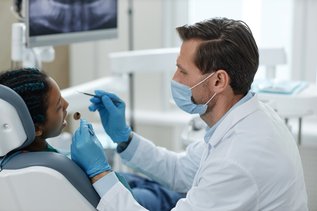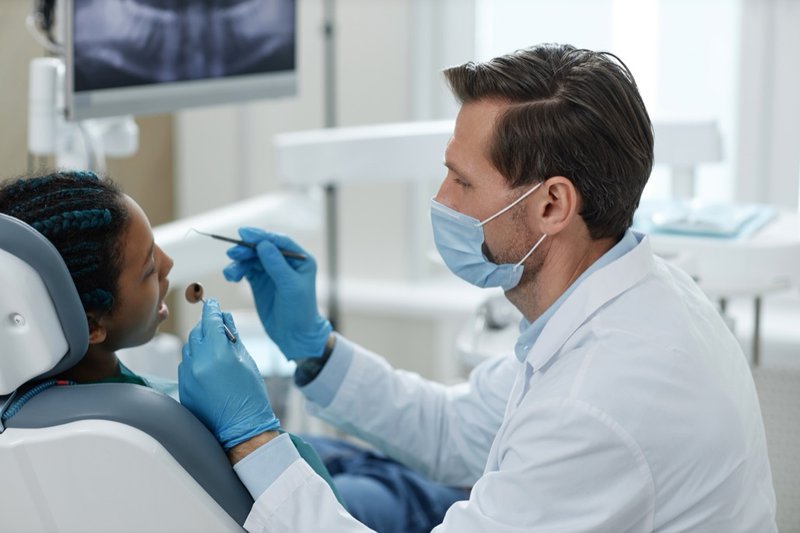
Sedation vs. General Anesthesia
Considering a dental procedure like a root canal but concerned about pain or anxiety? If you are feeling a little queasy or squeamish at the dentist's office, you're not alone! That's because 9.8% of Canadians are afraid of dental treatment. The very idea of dental instruments probing around your teeth can be enough to induce nausea and apprehension.
But what if there was a simple way to relax and breeze through your next dental procedure without worrying it would be that scary scene straight out of 'Marathon Man'?
Sedation and general anesthesia are routinely employed to protect and improve a patient's dental health. These medical procedures help keep pain and anxiety at bay, ensuring your comfort when undergoing a complex, potentially painful dental procedure.
In this article, we'll take a closer look at sedation and general anesthesia. You'll learn some of the most prominent differences between the two major ways to reach a deep state of relaxation for dental procedures! What is sedation, what is general anesthesia, and how does it differ from general anesthesia? Let’s find out.

Sedation in Dentistry
If you have ever flinched at the sight of a scaler or experienced discomfort during a dental appointment, you may be familiar with the concept of sedation. It refers to the careful use of sedative drugs to slow down the brain's activity, gradually minimizing discomfort and pain.
An increasing number of oral care providers and dentists are now providing sedation options to their patients because of its benefits for people with general dental anxiety, specific medical issues, or a strong gag reflex.
Many sedation techniques are used in dentistry, such as:
- Administering nitrous oxide – laughing gas - to induce a calming effect within a few minutes.
- Using oral sedative medications in the form of tablets or syrups an hour before the dental procedure. Some commonly used drugs include Triazolam and Zaleplon.
- Administering sedative drugs intravenously to induce deep sleep during the procedure.
General Anesthesia in Dentistry
The next question that naturally comes to mind is about general anesthesia. What is general anesthesia? In simple words, it's the usage of certain drugs to induce a well-timed and complete loss of consciousness in patients undergoing extensive dental procedures or having other medical issues. While general anesthesia isn't routinely used for all dental procedures, it is usually reserved for:
- Extensive or complex surgeries, including wisdom teeth removal with significant impaction and multiple tooth extractions.
- Severe dental anxiety.
- Individuals with specific medical conditions, such as severe respiratory problems or uncontrollable movement disorders.

Comparison of Sedation vs. Anesthesia
When comparing sedation vs. general anesthesia, you shouldn't forget that while both of them are different forms of anesthesia, they differ from each other based on the following factors:
Level of Consciousness
Using sedation techniques, patients are put in a relaxed state of consciousness. With general anesthesia, you'll be completely "out of it" for the duration of the procedure. As a result, you will feel no pain and have no memory of it afterward.
Patient Responsiveness
Sedation is like patients taking a siesta in which they still can hear, sense, and remember things. Also, they respond to strong stimuli. In the case of general anesthesia, however, they can't do any of these things.
Physiological Effects
Sedated individuals may need breathing support, but people under general anesthesia require a medical practitioner to have full control of their air passage because they can't breathe on their own. Moreover, sedated patients maintain their cardiovascular function, while people under general anesthesia face an impairment to some extent. This way, they have to be closely monitored by doctors/nurses who keep a watchful eye on their vitals.
Patient Selection and Safety Considerations
Given the different effects of sedation and general anesthesia, dentists must choose the better option out of the two. It's done by evaluating and screening patients for sedation and anesthesia suitability before dental procedures. It helps dental experts figure out what level of sedation will get the job done optimally, keeping the following factors in mind:
Age
Infants and youngsters do well with general anesthesia, while adults do well with sedation techniques as long as the procedures aren't complex.
Medical History
Individuals with a history of respiratory and cardiovascular issues aren't considered suitable for general anesthesia due to a high impairment risk.
Case Intensity
Healthcare providers can choose mild sedation, deep sedation, or general anesthesia for their patients, depending on the intensity and demand of the dental procedures the patient has to undergo.
Advancements and Future Directions
Alongside the recent technological advancements, new techniques are emerging, forever transforming the methods for sedation and anesthesia in dentistry. Some examples of the latest tech-empowered enhancements in dental science include:
CLADS
Clads or Closed-Loop Anesthesia Delivery Systems are automated devices that require little to no constant human input. The system maintains and administers the correct doses of anesthesia and sedative drugs.
AIMS
Anesthesia Information Management Systems have completely revolutionized record keeping and understanding of trends regarding anesthesia administration and its effects on patients for ensuring patient safety.
Importance of Individualized Treatment Planning
While the pros and cons of sedation vs. general anesthesia can be weighed to one's liking, we can't downplay the importance of individualized treatment planning. Dental anesthesia teams carefully evaluate patients receiving dental care and in need of sedation or anesthesia to reap the benefits of tailor-made treatment plans, such as:
- Reduction in dental anxiety
- Minimal discomfort
- Ideal patient safety
- Shorter recovery period
- Efficient use of time and resources
Hopefully, you now understand the difference between sedation and general anesthesia and what sets these two major procedures apart. More importantly, you will not have to dodge a routine dental appointment out of fear.

